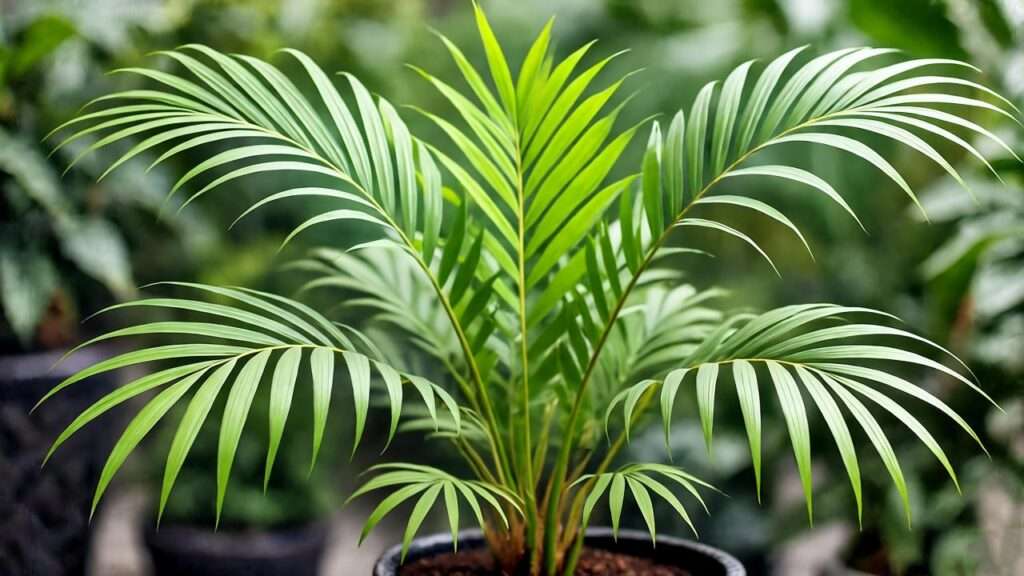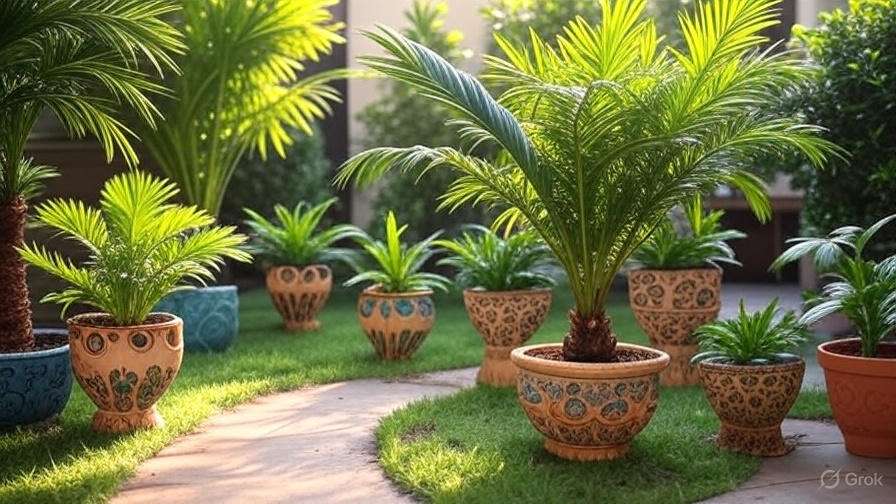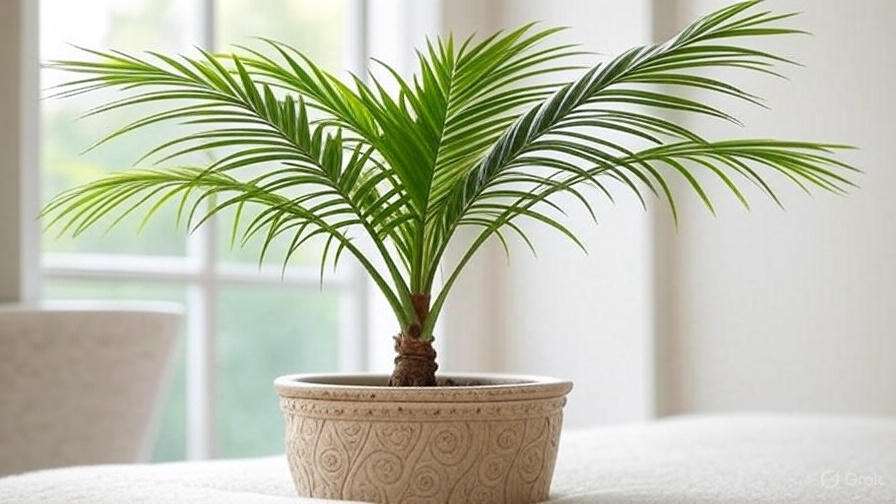Imagine transforming your home into a lush, tropical oasis with just one plant! The miniature palm plant is your ticket to vibrant indoor greenery, effortlessly blending elegance with low-maintenance care. Perfect for small apartments, cozy offices, or minimalist spaces, these compact palms bring a touch of the tropics without demanding much space or effort. Whether you’re a seasoned plant parent or a beginner, this guide will equip you with expert-backed strategies to grow a thriving miniature palm plant. Backed by years of horticultural experience and the latest plant care research, we’ll cover everything from light and watering to troubleshooting and styling, ensuring your palm flourishes. Ready to create your indoor jungle? Let’s dive in! 🌿
1. Understanding the Miniature Palm Plant 🌱
1.1 What Is a Miniature Palm Plant?
Miniature palm plants are compact, tropical plants that belong to the Arecaceae family, known for their feathery fronds and elegant growth. Unlike their towering outdoor cousins, these palms, such as the Parlor Palm (Chamaedorea elegans), Pygmy Date Palm (Phoenix roebelenii), and Sago Palm (Cycas revoluta), are perfectly sized for indoor spaces, typically growing to 2–4 feet tall. Native to tropical regions like Central America and Southeast Asia, they’ve adapted well to indoor environments, thriving in controlled conditions. Their small stature makes them ideal for tabletops, shelves, or corners, adding a vibrant green accent to any room.
1.2 Why Choose a Miniature Palm Plant?
Miniature palms are a favorite among plant enthusiasts for their versatility and benefits. They purify indoor air by removing toxins, as supported by NASA’s Clean Air Study, and their lush foliage elevates any space’s aesthetic. Compared to finicky plants like orchids or high-maintenance ferns, miniature palms are forgiving, making them perfect for busy lifestyles. For example, Sarah, a reader from Seattle, shared how a Parlor Palm transformed her dimly lit apartment into a cozy retreat without requiring constant attention. Plus, their slow growth means less frequent repotting, saving you time and effort.
1.3 Popular Varieties of Miniature Palm Plants
Here are the top miniature palm varieties for indoor growing:
- Parlor Palm (Chamaedorea elegans): Known for its shade tolerance and delicate, arching fronds. Ideal for low-light spaces.
- Pygmy Date Palm (Phoenix roebelenii): Features soft, feathery leaves and a compact size, perfect for small corners.
- Sago Palm (Cycas revoluta): A slow-growing, sturdy plant with stiff, glossy fronds. Note: It’s not a true palm but a cycad.
| Variety | Height | Light Needs | Care Level | Unique Feature |
| Parlor Palm | 2–4 ft | Low to bright indirect | Easy | Shade-tolerant |
| Pygmy Date Palm | 3–5 ft | Bright indirect | Moderate | Feathery, soft fronds |
| Sago Palm | 2–3 ft | Bright indirect | Moderate | Unique, prehistoric look |
2. Essential Care Requirements for Miniature Palm Plants 🌞
2.1 Light Requirements
Miniature palm plants thrive in bright, indirect light, mimicking their natural understory habitat. Place them near east- or north-facing windows to avoid harsh, direct sunlight, which can scorch their leaves. If your space lacks natural light, fluorescent or LED grow lights (5000–6500K) work well. For low-light areas, Parlor Palms are your best bet, tolerating as little as 50–100 foot-candles. Expert Insight: Download a light meter app (like Lux Light Meter) to measure your room’s light levels and ensure your palm gets 200–800 foot-candles for optimal growth. Rotate your plant every few weeks to promote even frond development.
2.2 Watering Needs
Watering is where most palm owners stumble, but it’s simple with the right approach. Water your miniature palm when the top inch of soil feels dry to the touch—typically every 7–10 days. Use a moisture meter for precision or stick your finger into the soil to check. Overwatering leads to root rot, signaled by yellowing leaves, while underwatering causes browning tips. Pro Tip: Use distilled or rainwater to avoid mineral buildup, which can harm sensitive palms. Always ensure your pot has drainage holes, and empty saucers to prevent soggy roots.
2.3 Soil and Potting
A well-draining, peat-based potting mix is ideal for miniature palms. Combine 2 parts peat moss, 1 part perlite, and 1 part sand for a custom blend, or use a commercial mix labeled for palms or tropical plants. Choose a pot with drainage holes, sized just 1–2 inches larger than the root ball to prevent overwatering. Repotting Guide:
- Repot every 2–3 years or when roots are crowded.
- Gently remove the plant, shake off old soil, and trim damaged roots.
- Place in a new pot with fresh soil, water lightly, and keep in indirect light for a week.
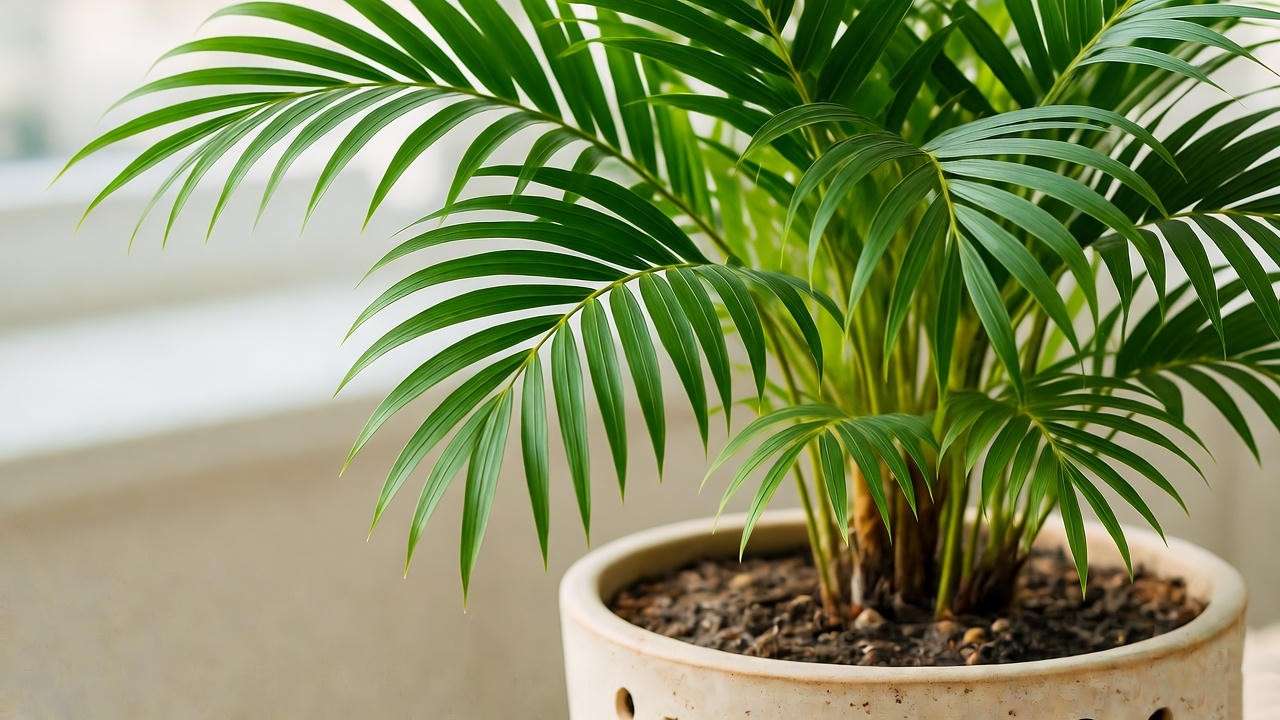
2.4 Temperature and Humidity
Miniature palms prefer temperatures between 65–80°F (18–27°C), mimicking their tropical origins. Avoid placing them near drafty windows or heating vents, which can cause stress. They thrive in 50–60% humidity, but most homes average 30–40%. Boost humidity with a pebble tray, daily misting, or a humidifier set to 50%. Warning: Low humidity leads to brown leaf tips, especially in winter. If you notice this, place a bowl of water near your plant or group it with other plants to create a humid microclimate.
2.5 Fertilizing for Growth
Fertilize your miniature palm monthly during spring and summer with a balanced, water-soluble fertilizer (e.g., 10-10-10 or 20-20-20) diluted to half strength. Avoid fertilizing in fall and winter when growth slows. Over-fertilizing can burn roots, causing brown, crispy fronds. Common Mistake: Using too much fertilizer—stick to 1/4 teaspoon per gallon of water for safety. If you notice salt buildup (white crust on soil), flush the pot with water to remove excess minerals.
3. Step-by-Step Care Routine for Miniature Palm Plants 📅
3.1 Daily and Weekly Care Checklist
A consistent care routine keeps your palm thriving with minimal effort. Here’s a quick checklist:
- Daily: Check soil moisture with your finger or a moisture meter. Inspect leaves for pests or dust.
- Weekly: Rotate the plant 90 degrees for even light exposure. Wipe fronds with a damp cloth to remove dust and improve photosynthesis.
- Example Schedule: Monday—check soil; Wednesday—mist for humidity; Sunday—rotate and clean leaves. This routine takes just 5–10 minutes a week, perfect for busy plant owners.
3.2 Seasonal Care Adjustments
Your palm’s needs shift with the seasons:
- Spring/Summer: Increase watering to every 5–7 days and fertilize monthly to support active growth. Ensure bright, indirect light as days lengthen.
- Fall/Winter: Reduce watering to every 10–14 days, as growth slows. Monitor for dry indoor air from heaters and boost humidity with a humidifier.
- Expert Tip: If winter light is low, supplement with a grow light for 10–12 hours daily to mimic summer conditions.
4. Troubleshooting Common Miniature Palm Plant Problems 🛠️
4.1 Yellowing or Browning Leaves
Yellowing leaves often signal overwatering, while browning tips suggest low humidity or underwatering. To diagnose:
- Overwatering: Check for soggy soil or a musty smell. Reduce watering and ensure proper drainage.
- Low Humidity: Mist leaves or use a humidifier to maintain 50% humidity.
- Nutrient Deficiency: Apply a balanced fertilizer if leaves are pale or yellowing uniformly.
Visual Guide: Healthy leaves are vibrant green; yellow leaves are soft and limp; brown tips are dry and crispy.
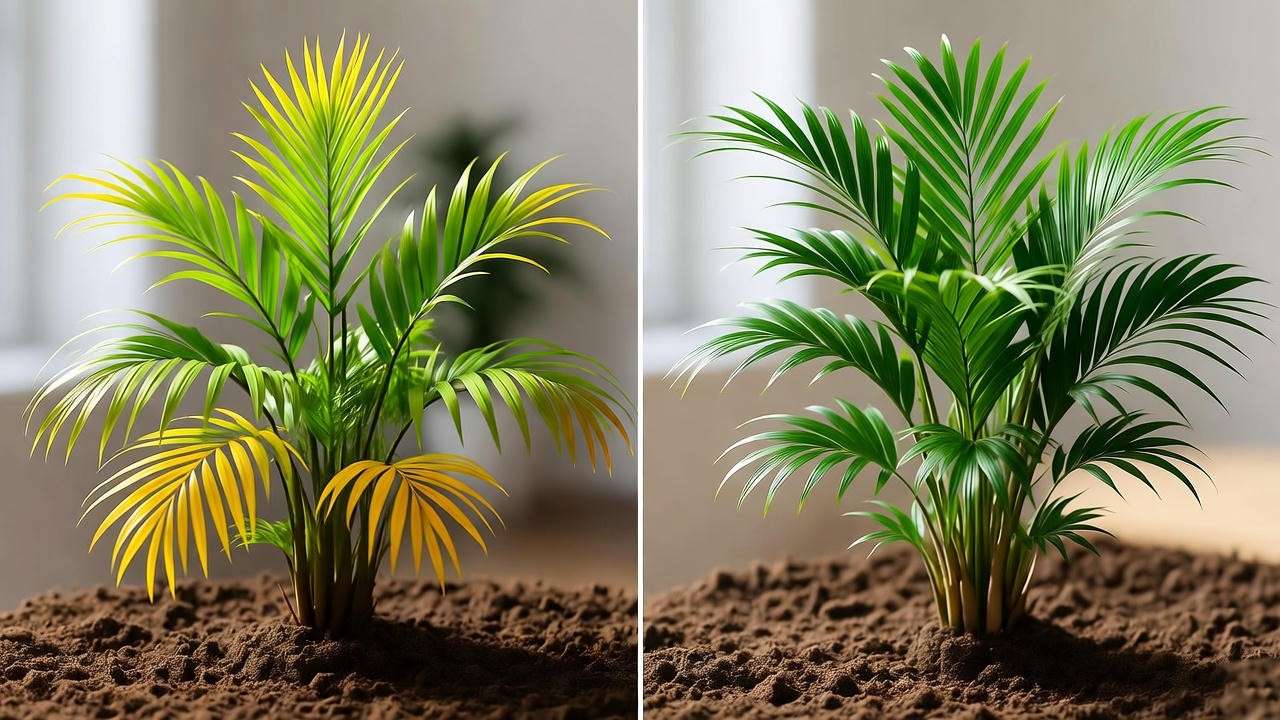
4.2 Pests and Diseases
Miniature palms are relatively pest-resistant but can attract spider mites, scale, or mealybugs. Inspect undersides of leaves for tiny webs, sticky residue, or white cottony spots. Prevention:
- Clean leaves weekly to deter pests.
- Spray with neem oil (1 tsp per quart of water) every 2 weeks.
Treatment: Isolate the plant, wipe pests with a soapy cloth, and apply neem oil for 2–3 weeks. Fungal diseases like root rot are rare but occur in overly wet soil—ensure proper drainage to avoid this.
4.3 Slow Growth or Drooping Fronds
If your palm grows slowly or fronds droop, check for:
- Insufficient Light: Move to a brighter spot or add a grow light.
- Root-Bound Plant: Repot if roots are circling the pot’s base.
- Poor Drainage: Ensure soil isn’t compacted; refresh with a well-draining mix.
Case Study: Emma, a reader from Chicago, revived her drooping Parlor Palm by moving it to a brighter window and repotting it in fresh soil, seeing new growth within weeks.
5. Styling and Displaying Your Miniature Palm Plant 🏡
5.1 Choosing the Perfect Spot
Finding the right spot for your miniature palm plant is key to both its health and aesthetic impact. Ideally, place it near an east-facing window for gentle morning light or a north-facing window for consistent, indirect light. If you’re in a dimly lit space, a corner with ambient light or a grow light setup works well. According to Feng Shui principles, placing a palm in the southeast corner of your home can enhance prosperity and positive energy. Example: Before-and-after photos from plant enthusiast Lisa show how a Pygmy Date Palm elevated her living room’s vibe when placed near a bright window with sheer curtains.
5.2 Pairing with Decor
Miniature palms are versatile for styling. Choose pots that complement your space:
- Ceramic Pots: Add elegance with neutral tones like white or sage green.
- Terracotta Pots: Offer a rustic, breathable option that prevents overwatering.
- Minimalist Baskets: Line with plastic for drainage and pair with modern decor.
For a lush look, pair your palm with low-maintenance plants like pothos or ZZ plants. Inspiration: Create a tropical corner by grouping a Parlor Palm with a snake plant and a fern in matching ceramic pots, as seen in a popular Instagram home decor post. Elevate the pot on a wooden stand to add height and draw attention to its feathery fronds.
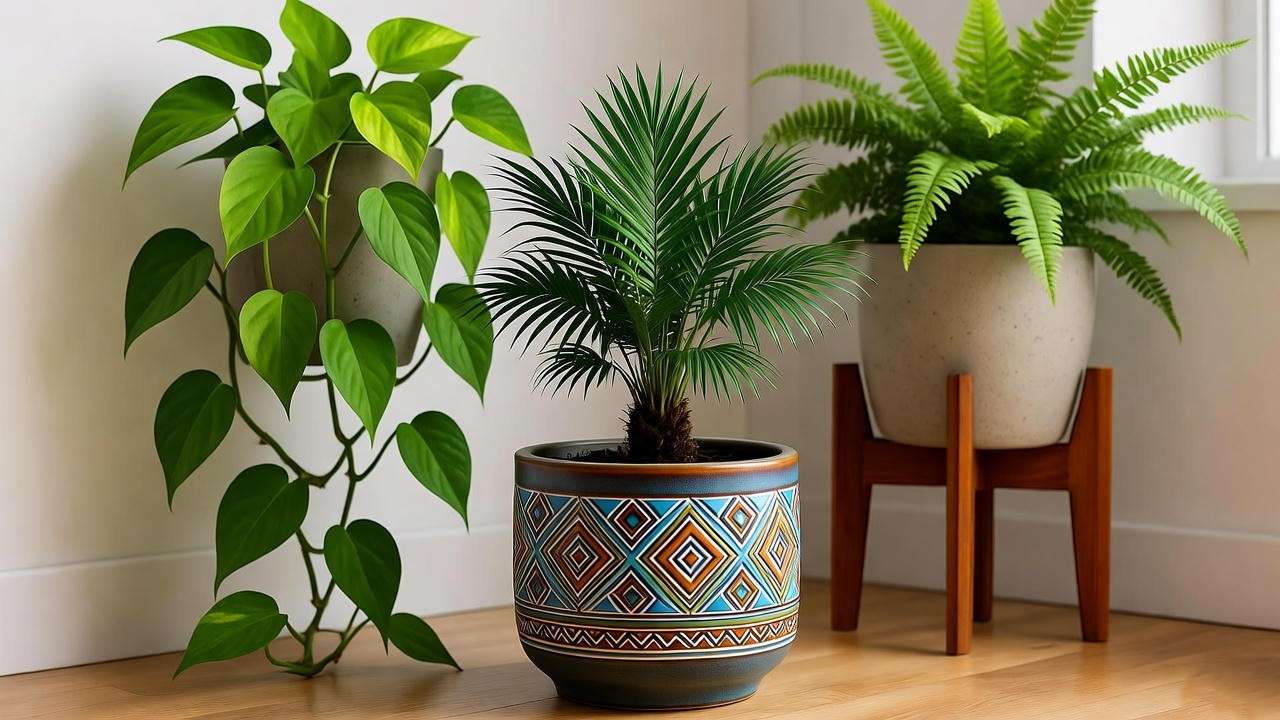
6. Advanced Tips for Miniature Palm Plant Enthusiasts 🌟
6.1 Propagating Miniature Palms
Propagating miniature palms can be rewarding but requires patience. Parlor Palms are propagated through division, while Pygmy Date Palms can grow from seeds. Sago Palms are trickier, often requiring offsets (pups). Here’s a step-by-step guide for division (Parlor Palm):
- Gently remove the plant from its pot during repotting.
- Identify natural divisions in the root ball with multiple stems.
- Use a clean, sharp knife to separate sections, ensuring each has roots.
- Plant each division in a small pot with fresh, well-draining soil.
- Keep in indirect light and maintain high humidity for 4–6 weeks.
Success Rate: Division has an 80% success rate with proper care, but seed propagation for Pygmy Date Palms can take 3–6 months to germinate. Expert Insight: Patience is key—palms grow slowly, so don’t expect rapid results.
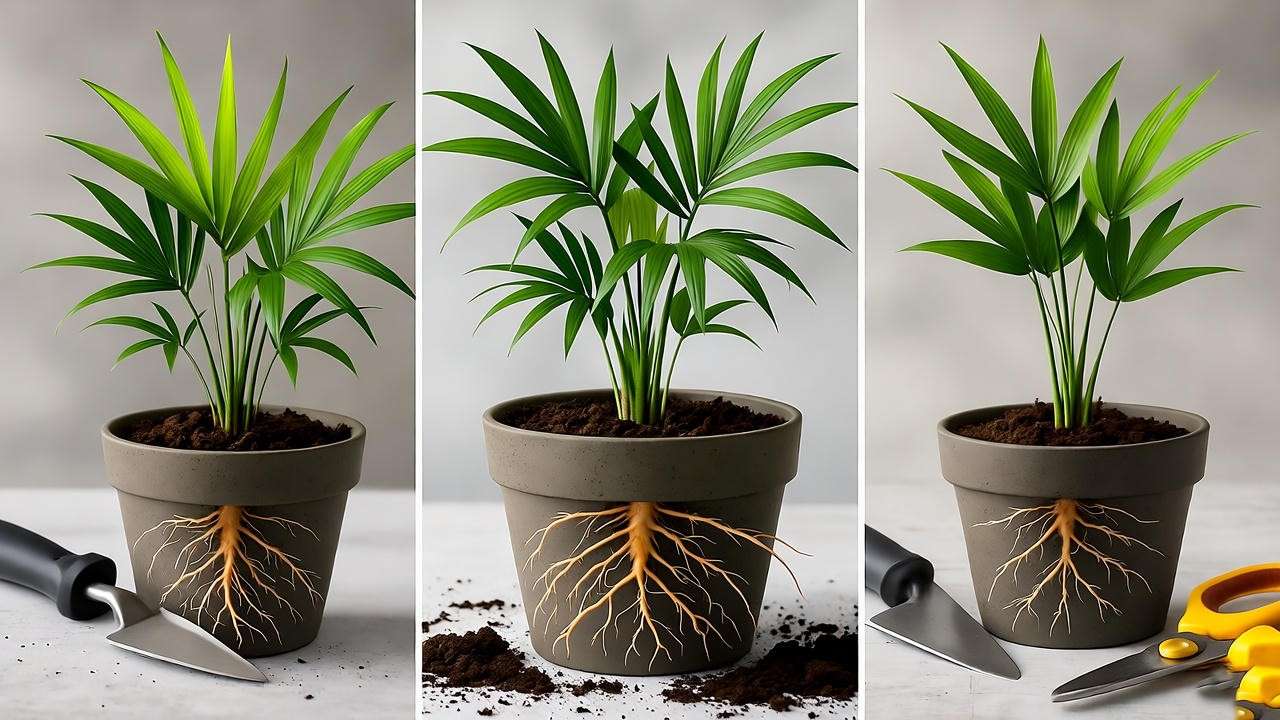
6.2 Creating a Tropical Indoor Oasis
For enthusiasts, miniature palms can anchor a tropical indoor oasis. Combine multiple varieties—like a Parlor Palm with a Pygmy Date Palm—for a layered, jungle-like effect. Use a grow light (10,000 lumens, 12 hours daily) to mimic tropical sunlight in low-light homes. Automated watering systems, like a drip irrigation kit, can simplify care for multiple plants. Reader Story: Mark, a plant hobbyist from Miami, created a palm-filled home office with three miniature palms, a humidifier, and a grow light, boosting his productivity and mood.
7. FAQs About Miniature Palm Plant Care ❓
- Are miniature palm plants safe for pets?
Most miniature palms, like Parlor and Pygmy Date Palms, are non-toxic to cats and dogs, per the ASPCA. However, Sago Palms are highly toxic, causing severe symptoms if ingested. Keep Sago Palms out of reach of pets or opt for safer varieties. - How fast do miniature palms grow?
Miniature palms are slow growers, adding 6–12 inches per year under ideal conditions. Parlor Palms are the slowest, while Pygmy Date Palms may grow slightly faster with ample light and nutrients. - Can I place my palm outdoors?
Yes, in warm climates (USDA zones 9–11), miniature palms can thrive outdoors in shaded areas. Protect them from direct sun and bring them indoors if temperatures drop below 50°F (10°C). - Why are my palm’s fronds turning brown?
Brown fronds typically indicate low humidity, overwatering, or fluoride sensitivity. Increase humidity, adjust watering, and use distilled water to prevent further browning.
8. Conclusion
Miniature palm plants are the perfect blend of beauty and simplicity, bringing tropical charm to any indoor space. By following this guide—covering light, watering, soil, and troubleshooting—you’re equipped to grow a thriving palm that enhances your home’s ambiance. Whether you choose a Parlor Palm for its low-light tolerance or a Pygmy Date Palm for its feathery elegance, these plants reward minimal effort with maximum impact. Start your miniature palm journey today and transform your space into a vibrant, green oasis! Share your palm care stories in the comments, and explore our related guides, like “Top 10 Indoor Plants for Beginners,” for more plant care inspiration. 🌿

